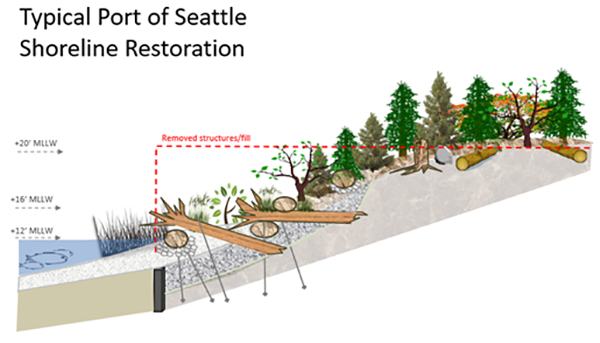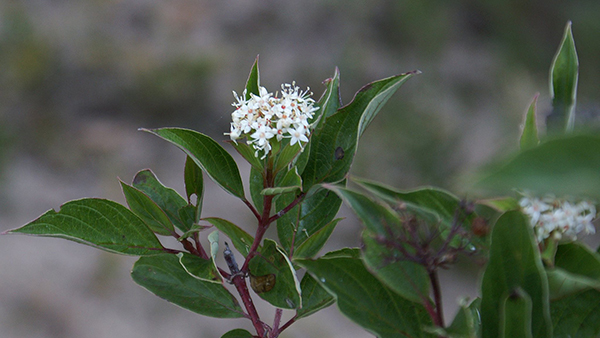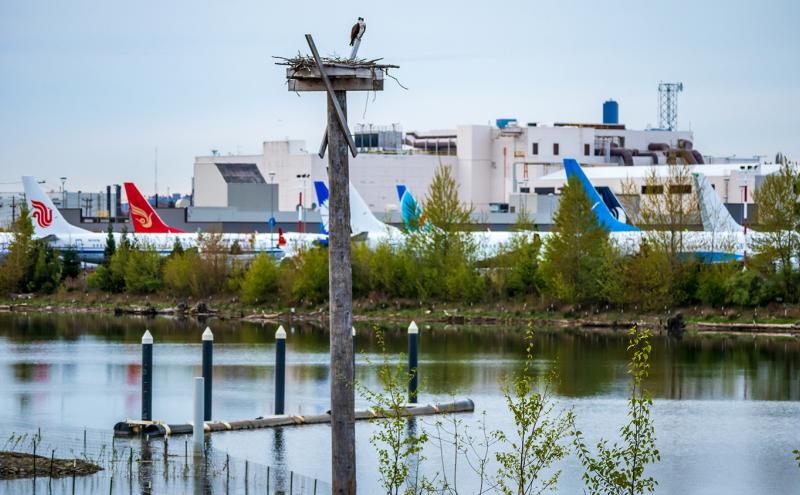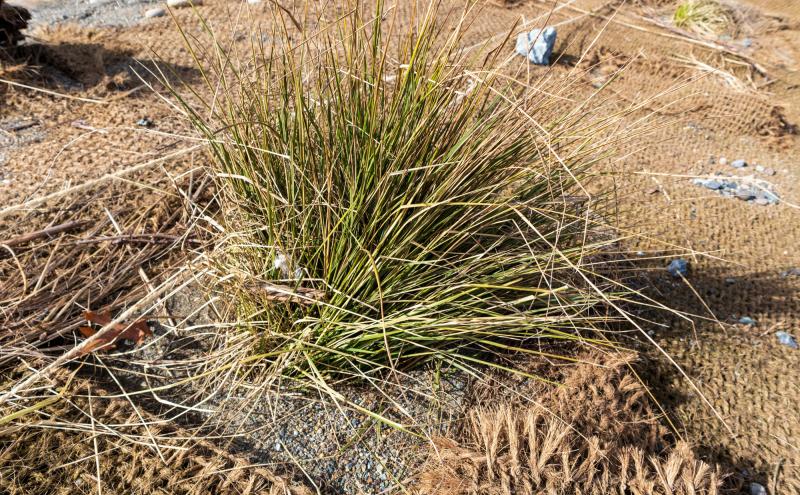
By Katie Byrnes, former Washington Sea Grant Hershman Fellow
As a committed steward of the region’s public resources and the environment, the Port of Seattle manages shoreline and habitat areas in a way that benefits the environment, community, and economy.
With that goal in mind, for the past two years, the Port has worked to enhance habitat along its 15.4 miles of shoreline through the Sustainable Shorelines Program. Key components include adding riparian vegetation along the shoreline to previously armored riverbanks (like seawalls and other structures) in Elliott Bay and the Duwamish River, enhancing bull kelp forests and eelgrass beds to sequester carbon, and constructing floating wetlands in areas where it is difficult to restore natural habitat.
How does the Port create sustainable shorelines?
Learn how the Port is working to enhance shoreline habitat:
Living shorelines
In 2021- 2022, the Port’s environmental team assessed the stabilizing structures along the Port’s shoreline properties. They identified places where hard shoreline armoring, like seawalls or rocks that protect against erosion, could be replaced with soft or “green” alternatives that restore ecological functions of the habitat while still stabilizing the shoreline against erosion.
Green shorelines use materials like large wood, compost, boulders, and native riparian and aquatic vegetation to mimic natural shoreline conditions. These soft materials stabilize the bank and increase habitat connectivity between marine and terrestrial ecosystems, enhancing or creating fish and wildlife habitat in critical areas. Creating living shorelines is a key component of the Sustainable Shorelines Program – building coastal resilience while protecting assets on land and benefitting the community.
Living shorelines offer the following benefits:
- Improve water quality
- Increase carbon storage
- Provide protection from waves and currents
- Create habitat for a variety of species, including aquatic invertebrates which are an important source of prey for juvenile Chinook salmon

Living shorelines in action
sbəq̓ʷaʔ Park and Shoreline Habitat (formerly Terminal 108) is located along the Lower Duwamish River at the street end of Diagonal Way. Previously used by the Port of Seattle as a marine cargo facility, the site has been converted to provide public shoreline access and intertidal fish and wildlife habitat. After the shoreline at sbəq̓ʷaʔ Park began to erode, Port staff decided the property was a good fit for the Sustainable Shorelines Program. In spring 2022, the Port began to stabilize and restore the shoreline using natural materials like rocks, coir fabric, bark, and large, anchored logs that restore ecological functions.
Project highlights:
- 70 feet of shoreline restored
- 24 repurposed logs used
- 11 species of native plants used
- 108 native plants planted
- Rock path installed for public shoreline access
Native plant species used :

- Red osier dogwood
- Mahonia repens
- Potentilla gracilis
- Polystichum munitum
- Juncus effusus
- Ribes aureum
- Rosa gymnocarpa
- Rosa pisocarpa
- Holodiscus discolor
- Acer circanatum
- Symphoricarpos albus
Fun fact: The logs used in this restoration (and other Port shoreline restoration projects) were contributed by the Army Corps of Engineers “Navigation Safety Program” which removes logs from Puget Sound that pose a safety hazard to small vessels. Rather than disposing of the logs in a landfill, the Port stores them for use in restoration projects.
Green partnerships for Blue Carbon and urban kelp

Bull kelp and eelgrass are rich in carbon, provide habitat for diverse species, and provide shoreline stabilization and natural resource benefits.
- Bull kelp protects nearshore areas by acting as a barrier between the shoreline and waves that contribute to erosion
- Eelgrass and bull kelp sequester carbon dioxide which may reduce impacts of ocean acidification in their immediate vicinity
- Bull kelp provides habitat, refuge and feeding ground for over 1,000 species including rockfish, salmon, sea otters, and resident orcas
- Eelgrass creates a safe area for fish to spawn while providing shelter and foraging areas for fish and shellfish
Through ongoing partnerships, the Port continues to explore and realize the benefits that kelp and eelgrass provide.
The Port began collaborating with the Washington Department of Natural Resources, Puget Sound Restoration Fund, and Department of Ecology in 2019 to evaluate the effectiveness of bull kelp, eelgrass, and oysters in sequestering carbon, increasing marine habitat availability, improving water quality, and providing shoreline stability. The findings from the ongoing Smith Cove Blue Carbon Pilot Project will help the Port understand how these important Puget Sound habitats can be restored.
The Port and the Seattle Aquarium are working together to study and map the presence of kelp forests along the urban waterfront of Elliott Bay. This project will collect information on the conditions that help bull kelp thrive in urban areas to inform future conservation and restoration efforts in Puget Sound. Bull kelp in South Puget Sound and the Strait of Juan de Fuca has been the primary focus of kelp research in the region, and, until now, urban kelp beds in Elliott Bay and the East and West Waterway have been understudied.
Floating wetlands 
Floating wetlands, or “bio-barges,” are small, self-contained platforms that float on the surface of freshwater areas and grow native wetland plants to mimic the function of a natural wetland and provide resilient pockets of fish and wildlife habitat.
Floating wetlands provide the following environmental benefits:
- Generate environmental benefits in confined locations where infrastructure prevents conventional restoration techniques
- Improve water quality through absorption of excess nitrogen and phosphorus
- Provide cover for juvenile salmon while attracting the invertebrates that they feed on
In collaboration with the University of Washington’s Green Futures Research & Design Lab (GFL) and King County, the Port began a pilot study in 2018 to test the feasibility and potential of floating wetlands to restore emergent wetland habitat functions to critical freshwater habitats in the Duwamish River. Four bio-barge units were constructed and moored for the growing season at Terminal 105 and Terminal 108, where wetland resources that were once abundant are now rare.
Following this collaboration, the Port fabricated two alternative bio-barge designs from salvaged materials, including large pieces of wood provided by the U.S Army Corps of Engineers, for moorage at Fisherman’s Terminal in the Lake Washington Ship Canal.
While successful in freshwater, bio-barges are used less extensively in marine environments. To test the feasibility of growing marsh plants in saltwater, the Port will work with the University of Washington’s GLF and EarthCorps to host commercially available BioMatrix units at Shilshole Bay Marina.









